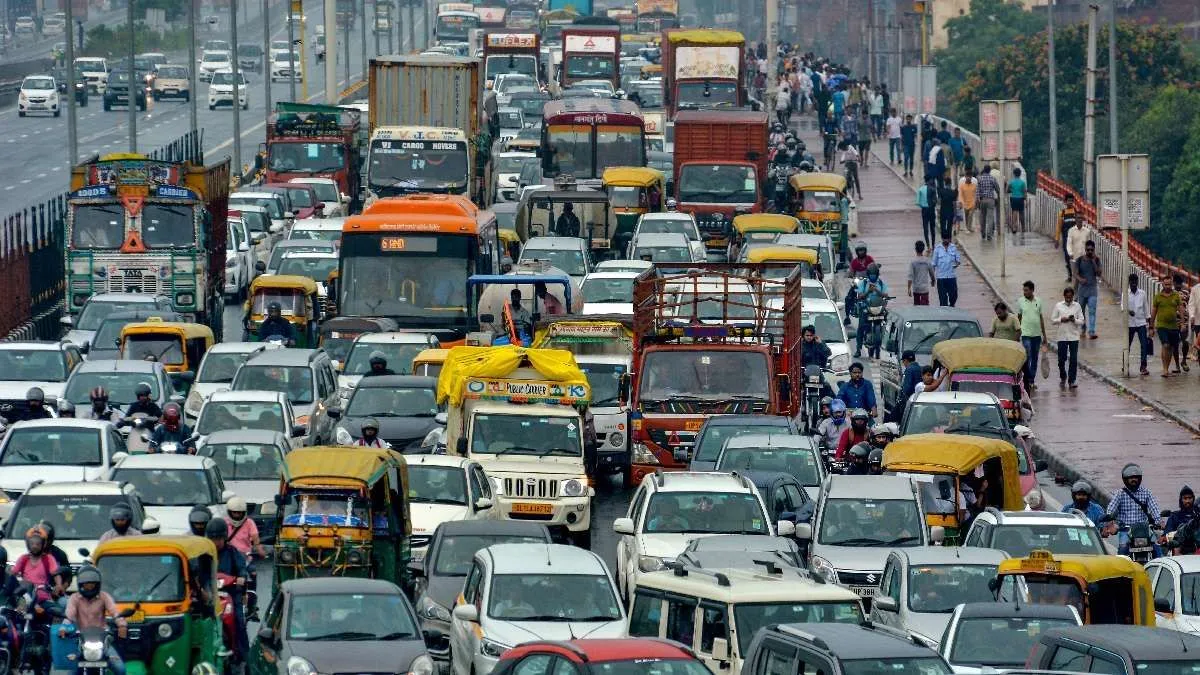- By Yashashvi Tak
- Sun, 08 Jun 2025 11:27 AM (IST)
- Source:JND
The Delhi government is planning to construct an elevated road over the existing 55-km stretch of Ring Road to ease traffic congestion. Public Works Department (PWD) Minister Parvesh Verma stated that a feasibility study for the project has already been commissioned. The proposed elevated corridor would be built on pillars and connected to key arterial roads through ramps to ensure smooth connectivity. Verma further mentioned that he had discussed the proposal with Union Road Transport and Highways Minister Nitin Gadkari, who has given his in-principle approval.
ALSO READ: Delhi Govt To Host International Yoga Day Events At 11 Venues On June 21 | Details
"This will be one of the biggest projects of this government and will be completed within its term," Verma told TOI.
The minister said that Delhi’s two Ring Roads carry the heaviest traffic load and are frequently congested during peak hours. Expanding the capacity of the existing stretch, he said, would not only help ease traffic on the Ring Roads themselves but also reduce congestion on connecting arterial routes.
"Since the new road will be entirely elevated, it can be built on pillars along the central verge of the existing road. The project will not require any acquisition of land and so can be completed within a given timeframe," Verma said, according to TOI.
Traffic-Free Roads After Elevated Road Construction Over Ring Road
Verma said traffic movement would become obstruction-free on Mathura Road, Aurobindo Marg, the DND Flyway, and routes leading to the airport, Gurgaon, Rohtak Road, and other highways with the construction of the new elevated road, which will ease the load of traffic currently using the Ring Road.
"The cost of the construction of an elevated road comes to about Rs 100 crore per kilometre. This project can easily be completed at a cost of Rs 5,500-6,000 crore," the PWD minister said, as per TOI report.
About Ring Road Delhi
Originally built as an efficient arterial route to ease traffic in the city center and enable smooth cross-city travel, the Ring Road now suffers from persistent congestion. In contrast to the newer Outer Ring Road, which was constructed later to divert traffic around the outskirts, the inner Ring Road is struggling under increasing strain. A combination of urban sprawl, poor planning, overwhelmed infrastructure, and lax enforcement has slowed this once-fast corridor to a crawl.
When the Ring Road was first planned in the 1950s and completed over the subsequent decades, it was intended to serve a very different city, one with a much smaller population and lighter traffic. Back then, Delhi’s population was under three million. Today, the metropolitan area houses more than 30 million people. Despite this massive growth, the road has not been widened or upgraded accordingly. What was originally designed as a bypass has effectively become a semi-central artery.
As the city expanded outward, neighborhoods such as South Extension, Punjabi Bagh, Lajpat Nagar, and Ashram transformed into dense urban hubs. Today, the Ring Road slices through a mix of commercial, institutional, and residential zones. It serves not only as a route for through traffic but also for local commuters accessing shops, markets, schools, and hospitals, leading to frequent stops and lane changes that disrupt the flow.
Heavy Traffic Hotspots Across Delhi
Intersections such as AIIMS, Moolchand, Dhaula Kuan, Ashram, and ITO act as major choke points where arterial routes meet heavy local traffic. Although flyovers and underpasses have been constructed at several spots, they frequently just relocate congestion instead of eliminating it. A 2024 survey by the Delhi Traffic Police identified 134 congestion hotspots across the city, with at least 12 located along the Ring Road and Outer Ring Road.

